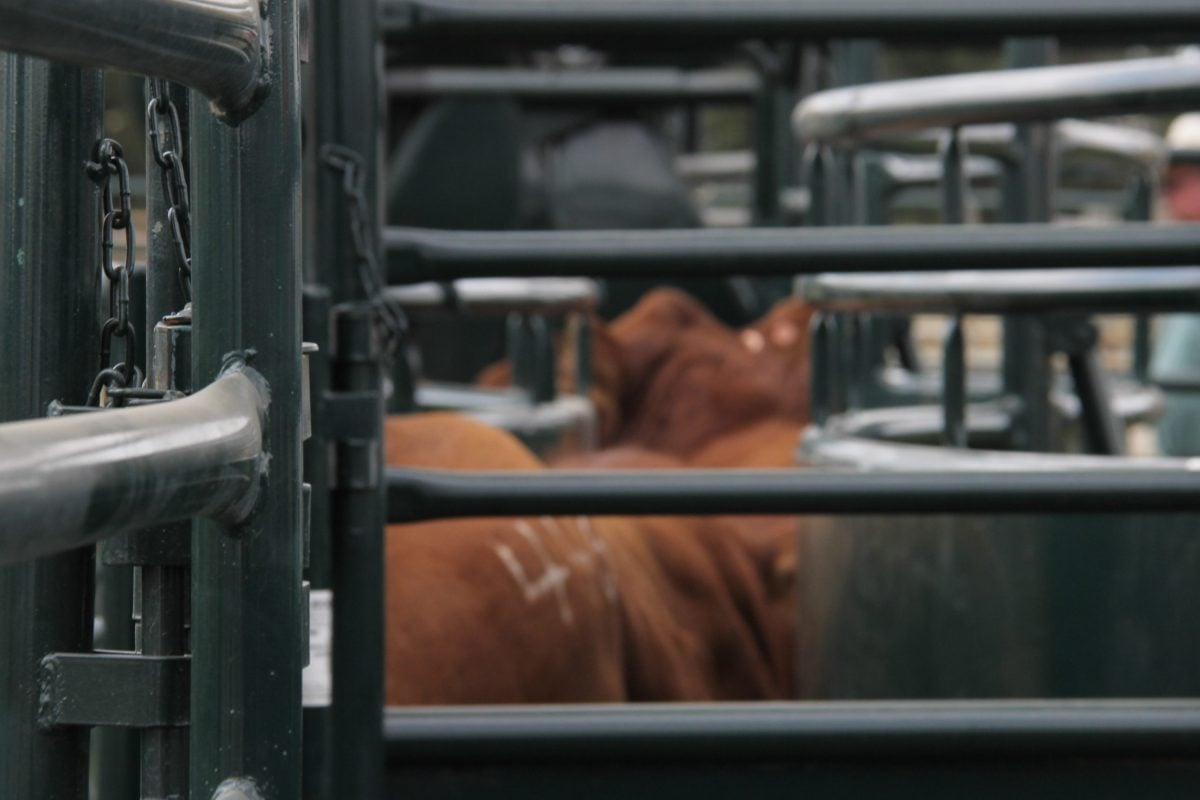By P.J. Huffstutter
CHICAGO, March 31 (Reuters) – Chicago Mercantile Exchange hogs closed lower on Monday, recovering somewhat from a limit-down open in response to a recent bearish USDA hog report.
CME feeder and live cattle were also lower, with feeders pressed by a jump in Chicago Board of Trade corn prices after the U.S. Department of Agriculture forecast farmers would plant fewer acres to corn than many traders expected. Lower wholesale beef values and profit-taking weighed on CME live cattle futures, traders said.
Read Also

U.S. livestock: Cattle make gains, hogs mixed
Most Chicago cattle futures rose on Wednesday after Tuesday’s hard fall. Hogs settled on either side of unchanged. Most-active October…
Friday’s USDA report showed the U.S. hog herd fell by three percent to 62.899 million head in the last quarter compared with a year ago. The decline was far less than many expected given the spread of a deadly pig virus known as PEDv.
Analysts, on average, had expected 61.493 million head, or 94.5 percent of a year ago. The U.S. hog herd at the same point last year was 65.072 million head.
“It’s the third report in a row that the trade believes the government is out of step,” said Don Roose, president of U.S. Commodities in West Des Moines, Iowa. “From 1,000 reported cases of PEDv in December, to close to 5,000 cases in February, there are a lot of people out here that don’t think the federal government is tracking it right.”
Actively traded June hogs closed down 2.40 cents per pound at 127.175, while lightly traded April closed up 0.425 cent at 126.000, underpinned by tight nearby cash hog supplies.
Talk continued among cash-hog dealers on Monday that the shrinking hog supplies are prompting some Midwest packing plants to move to a four-day kill week, instead of the traditional five days.
Still, the U.S. Department of Agriculture reported that Monday morning’s pork wholesale, or cutout, prices fell 45 cents per hundredweight, to $130.87.
EARLY SIGNS OF BBQ TROUBLE
CME April feeder cattle also closed down 1.325 cents per lb. at 177.025, while April live cattle were down 0.650 cent per lb. at 145.850.
“Part of the weakness we’re seeing in cattle is from the weakness we’re seeing on the hogs,” said Elaine Johnson, an analyst with CattleHedging.com.
USDA pegged Monday morning’s beef wholesale, or cutout, prices for choice cuts to be down one cent per cwt., to $234.45. Select cuts fell $1.22 per cwt., to $226.12, according to the federal data.
Johnson said she also expected the cash trade to be a bit sluggish this week, as USDA reported that packers had secured around 380,000 cattle under contract this week – compared with about 300,000 cattle for the same time period over the previous five years.
Industry analysts also cautioned that there could be longer-term troubles ahead for the beef and pork sectors, if retailers’ appetites for the volume slows later this year.
As the farm sector gears up for the spring grilling season, grocers have started stocking slightly smaller packages of ground beef, and other beef and pork products, in reaction to recent rallies in wholesale livestock prices, said food trends analyst Phil Lempert of the Lempert Report.
“Shoppers typically look at the total price versus the price per pound,” said Lempert, so retailers are packing “smaller portions to avoid ‘sticker shock'” among consumers.














